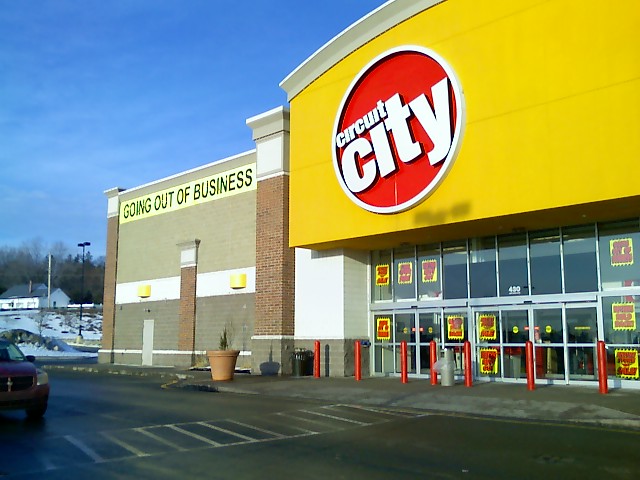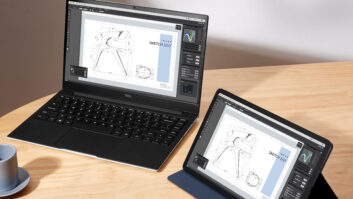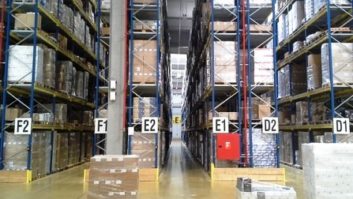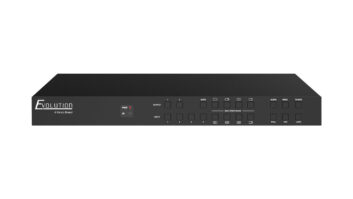
Few would argue that distributors are the lifeblood of the consumer tech industry.
Just as red blood cells carry life-giving oxygen throughout the body, distributors bring revenue-driving products from manufacturers to dealers across the country.
And the same way white blood cells keep us healthy by fending off invaders, distributors help keep retailers competitive with how-to seminars, product trainings and virtual assortments for their websites.
Given their special role as the bridge between vendor and dealer, they are in a unique position to experience the latest and greatest products and technologies, while understanding the needs and challenges of the merchants that will ultimately sell them at retail.
To tap into those insights, TWICE reached out to some of the industry’s leading distribution lights. Our mission: to get their take on 5G, and how best to prepare their retail customers for the coming mobile evolution, if not revolution.
And while we were on the subject of retail (and hearkening back to the life-blood analogy), we inquired into the health and well-being of their brick-and-mortar clients, now that 10 years have passed since Circuit City’s demise. Their thoughtful reflections follow.

TWICE: How will the advent of 5G change your business and the industry?
Fred Towns, New Age Electronics: 5G will create new expectations for speed and the amount of data you can move. The increased speed of streaming content and electronic software downloads will deliver immediate gratification for consumers. And as content becomes more accessible, there should be an increase in sales around PCs, gaming devices and mobile applications. An improved consumer experience will drive this growth.
While the possibilities are exciting, keep in mind that there’s still uncertainty around when the needed infrastructure to support 5G will be deployed. This continues to be a big unknown within the industry.
Warren Chaiken, Almo: We think that 5G is going to open up a lot of opportunities for independent retailers. The increased speed and reliability allows retailers to quickly and effectively provide their customers up-to-the-minute product and inventory information. While some may be concerned about the traditional retail shopping experience and face-to-face connection being lost, we feel that 5G technology can actually enhance the overall customer experience.
See also: Qualcomm Declares 2019 ‘The Year Of 5G’
As millennials are growing up and buying houses that need appliances, they are going about it very differently than we did 20 years ago — they research on the web long before they go to a store. For Almo, we feel that 5G will benefit our partners. It gives them the ability to use their phones more or less as an online showroom in the retail environment. Sooner or later every retailer will have to embrace 5G technology if they want to stay competitive.
Partner education is one of the key ways that Almo has always differentiated. We are currently working on a webinar series about the benefits of 5G so our retailers can become early adopters and maximize the benefits of the technology to grow their businesses.
Trevor May, D&H Distributing: We have yet to see how 5G technology will impact business and industry — it’s a bit too early to make predictions. Our hope is this may introduce an opportunity to drive new products and upgrade devices in the consumer marketplace.
If the adoption of 5G is anything like what the market witnessed when HD television was first introduced, it could mean a “big bang” of opportunity across a host of lines and categories. The consumer will need to see the value of 5G in order for that to happen, so it’s our job to communicate that as providers in the marketplace. With proper education, the protocol could drive consumers to upgrade or purchase new products, spurring revenue growth. That kind of catalyst could reshape the whole manufacturer landscape. But it will all hinge on whether the consumer is motivated to take advantage.
See also: What 5G Could Mean For CE (And The Retailers Selling It)
Helge Fischer, Catalyst AV: Our Catalyst AV distributor members have constant open communication, and this is a topic I have been discussing with the group. The general consensus is we have no idea what is going to happen. If there is an upcharge, this will benefit the carriers, not the industry.
While it will be an incredible leap from 4G, we simply cannot predict how it will affect everyday business at this point; it is way too early. However, it is all going to be eventually wireless — we don’t foresee fiber being pulled to every neighborhood at this point.”
Curt Hayes, Capitol: The word “change” may be a bit of a stretch. I see it as more of an improvement – an evolutionary step forward in cellular service and the market as a whole.
Many of us in the business consider 5G equal parts marketing hype and true technology. Sure, the speed and overall concept of improved connectivity is appealing, and it will no doubt result in a wide range of updated products; possibly some new variations on existing technologies.
But we are nowhere near seeing any real impact because true 5G technology won’t make a dent in the market until 2020. There may be faux 5G in the form of beefed up 4G LTE, but the real thing won’t be here for quite some time.
Dennis Holzer, PowerHouse Alliance: 5G will begin coming to market shortly. Manufacturers have been and continue to be in the development process of a whole generation of new A/V and consumer electronics products that dealers, integrators, and technicians will need to be educated on and prepare for.
See also: Looking Ahead To A 5G Future
5G is expected to be around 200 times as fast as the current 4G standard, and the most interesting improvement over 4G is the speed, significant depth and clarity of images. I anticipate that 5G’s increased speed, bandwidth, and clarity are all factors that will cause a major shift and increase in how we use mobile devices to connect and communicate with the IoT, and our day-to-day electronics.
Vince Stemen, Tech Data: As we’ve heard from industry pundits, 5G is a foundation required for many future technologies like autonomous automobiles. If we use autonomous vehicles as an example, 5G will lead to an entirely new set of applications and IoT solutions designed specifically to support the automotive industry — offering consumers enhanced experiences that were not possible without 5G. This type of expansive innovation will be replicated across multiple industries, predicated on the promise that 5G can enable new user experiences without lag or delay that are better than current technologies allow.
This expansion of technology, which brings devices online that were previously not connected in this way, will drive a tremendous amount of new edge infrastructure, an explosion of IoT devices and a proliferation of data. This will lead to a spike in demands for smart solutions that capture, manage and secure the windfall of data, particularly as real-time data applications expand.
TWICE: It’s been more than 10 years since Circuit City closed and the “death of retail” was declared. How are your brick-and-mortar customers holding up in 2019?
May: Retailers with both a dot-com e-commerce presence and brick-and-mortar locations are working to find a balance between serving these two customer communities. Those who have been successful have sometimes developed different strategies for these two sets of customer bases, capturing sales from both paradigms.
These retailers are reaping the advantages of each. The key is to market in a way that drives the enterprise itself, not just the dot-com or the brick-and-mortar aspect.

Towns: We’re urging our brick-and-mortar customers to think beyond the “store within a store” concept and focus on getting consumers into the store and keeping them there. In-store education, showing real-life applications for home and business, and displaying full solutions are all critical factors in today’s buying process.
Unique, eye-catching offerings and engaging customer service are also key. Providing this kind of in-store experience also helps win over consumers who might otherwise rely on showrooming.
Chaiken: We believe that retail is most definitely not dead, it’s just evolving!
The closing of Circuit City was a wake-up call for retailers with the realization that in order to not only stay alive but to thrive in retail, it is critical to understand the changing needs of the customer. Our independent retailers know that they have to do much more than just sell products in order to be successful.
Not only to they have to have an online sales and social media presence, they need to be able provide that value add, whether it’s bundled or customized packages and accessories with those products, or the inclusion of services such as delivery and installation.
At Almo, we are in the business of educating our partners on these latest business trends to keep them ahead of the curve. And we are always looking for new ways to bring bundled options and revenue-generating services to them so that they can pass these offerings on to their customers and stay profitable.
Fischer: The way I look at it, either Circuit City or Best Buy could have gone out of business; here is the difference: Circuit City went out of business as they only sold boxes and did not provide services. So how did Best Buy compete with Amazon? They bought a small company called Geek Squad to help people with installation. So Best Buy really has become a Hybrid installation company.
This has enabled Best Buy to offer same pricing as Amazon, and at the same time offer services and they have greatly increased the size of the Geek Squad.
See also: Inside IRL, Walmart’s High-Tech Retail Prototype
Retail in general is under siege; more electronics retailers disappear, and you don’t see new stores open. But the existing retailers who own their retail space and offer services/installation and advice are doing OK. hhgregg was another example of a retailer that was just selling boxes, and we saw the result from that just like Circuit 10 years earlier.
The third layer, the Catalyst AV retailer/custom installer, is normally a smaller operator, but benefits greatly from the offerings the Catalyst AV member offers and our services of credit, breadth of products, late Will Call windows, training and never-ending service.
Hayes: Retail is in no way dead. As much as online options have changed the retail landscape, our customers, who are primarily independent dealers in secondary and tertiary markets, are thriving thanks to the added value they provide.
New technologies often bring a concurrent new level of confusion to consumers who rely on our customers for input and guidance before making a purchase. While the number of dealers has shrunk over the years, our customers on the front line will continue to do well as long as they continue to offer the service and expertise that result in repeat business.
Holzer: Though the market has changed, brick-and-mortar continues to be an important component along with the integrators of our business. Today, all dealers know they cannot just open the doors in the morning and expect customers to be lined up waiting to enter. Instead, they’re adapting and catering to today’s online and ultimately impatient customers.
At the distributor level, our members are meeting integrator and dealer needs by in stock will call, same- and next-day shipping as well as extended pick-up and will-call hours. Aside from supporting inventory, our 39 locations are also used for hosting manufacturer events and demo days, sit-down design services for dealers, and our award-winning training programs that provide local dealers with ongoing education on all things A/V, consumer electronics, security, networking, automation and commercial applications and installation.
There are other creative ways to ensure dealers are engaging with their customers, such as the do-it-for-me (DIFM) approach. Communicating regularly with their existing customer base for check-ins and to let them know about new technologies they can add to their existing system, are another way that dealers can get repeat revenue from past existing business. System upgrades are an excellent way for dealers to maintain customer relationships, take advantage of repeat business, and encourage customers to walk through their doors.
See also: What AI Will Mean For Retail













